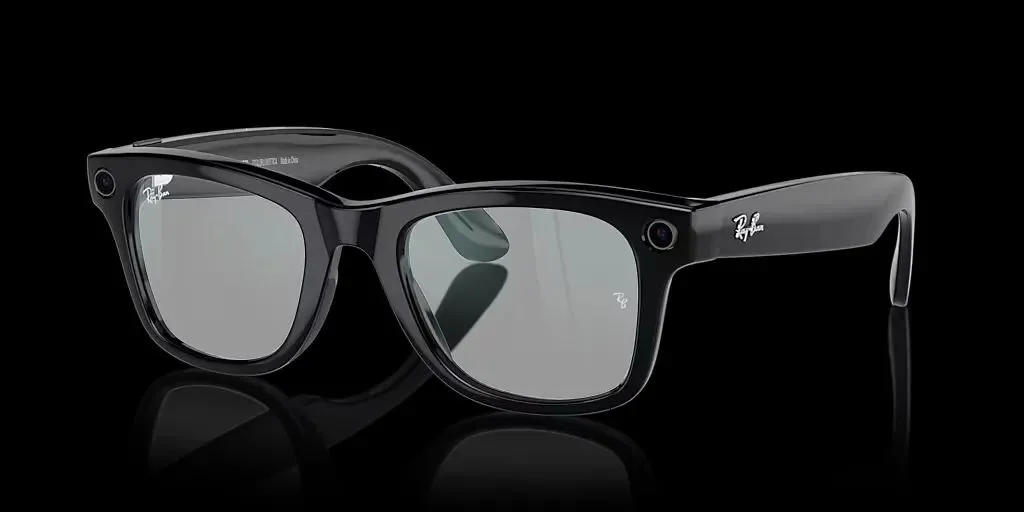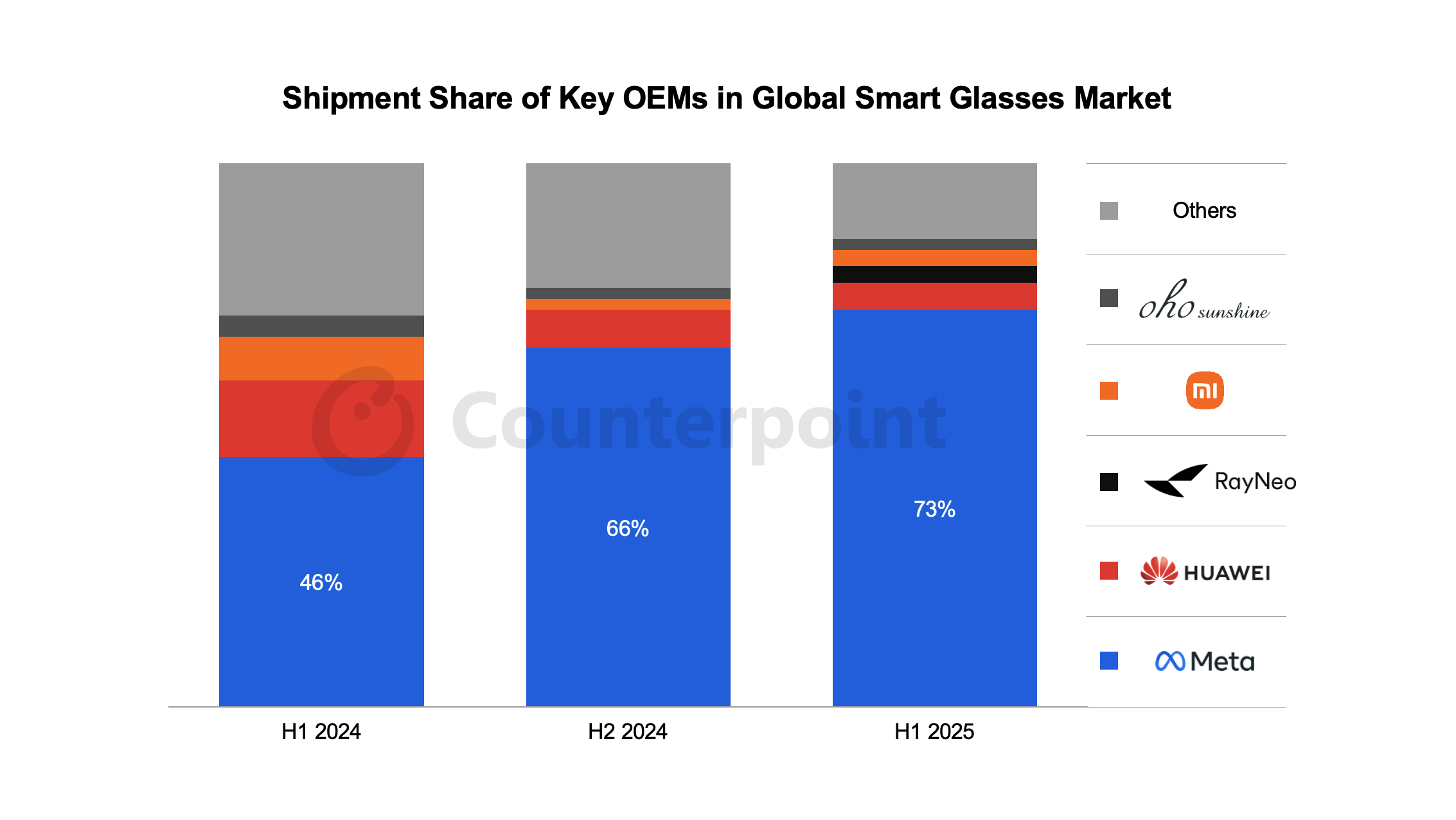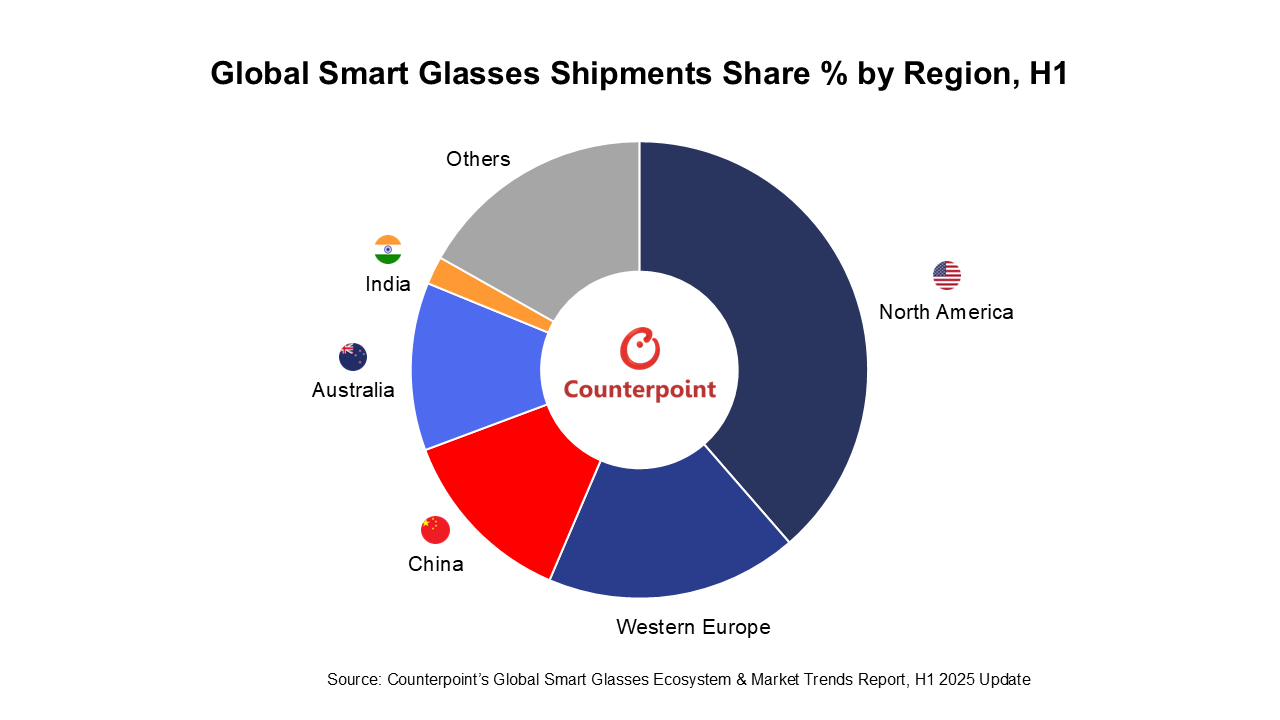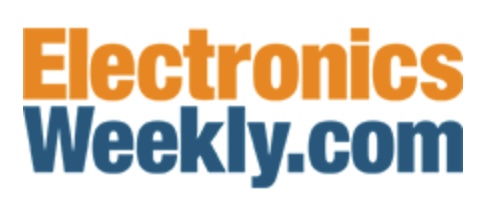Last year the smart glasses market value was estimated at $1.93 billion. This year it is expected to be worth around $2.47 billion.

Apart from Meta, AI glasses OEMs that shipped in H1 2025 included Xiaomi, TCL-RayNeo, Kopin Solos and Thunderobot.
More new AI glasses models are expected to enter the market in H2 2025, including from Meta, Alibaba and several smaller players.
AI smart glasses accounted for 78% of total shipments in H1 2025, up from 46% in H1 2024 and 66% in H2 2024, largely due to the dominance of Ray-Ban Meta AI Glasses. The AI glasses segment grew by over 250% YoY, significantly outpacing the overall market

AI Glasses, in regions where they are is available – such as North America, Western Europe and Australia – lead global smart glasses shipments. In Q2 2025, Meta and Luxottica expanded to India, Mexico and the UAE, which also boosted shipment shares in these markets.

More AI smart glasses are expected to enter the market from H2 2025 onward, including launches from Meta and Alibaba.
Meta recently introduced the Oakley Meta glasses, featuring improved battery life and enhanced video-shooting quality over the Ray-Ban Meta AI Glasses, and primarily targeting athletes and sports enthusiasts.
Apple is believed to be developing its first AI glasses.
Qualcomm recently launched an upgraded version of its premium smart glasses SoC – the AR 1+ Gen 1 – which Qualcomm claims is 26% smaller and consumes 7% less power, enabling slimmer product designs and longer battery life.
In parallel, various Chinese chipset makers, such as Allwinner Technology, are entering the market with budget SoC solutions aimed at powering more affordable smart glasses.
Counterpoint forecasts a 60% CAGR for units between 2024 and 2029.
